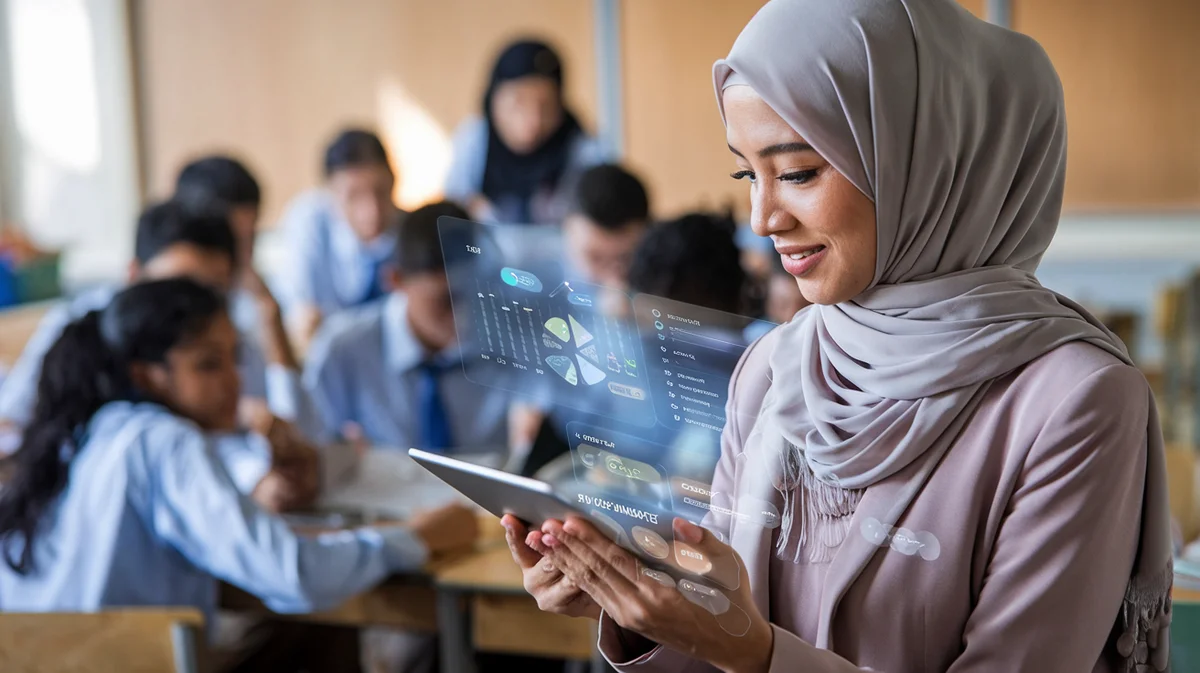Policy Reforms in Inclusive Education: A Global Perspective


wp:paragraph
Inclusive education policy is transforming learning environments worldwide, ensuring that every child — regardless of ability, background, or circumstance — has access to quality education. At UNOWA, we are proud to be at the forefront of this movement, designing and delivering adaptable, innovative educational systems that empower institutions, educators, and students across the EU, MENA, and CIS regions.
/wp:paragraph
wp:heading {"level":2}
The Evolution of Inclusive Education Policy
/wp:heading
wp:paragraph
Over the last two decades, inclusive education has shifted from a niche concern to a central pillar of national education strategies. This transformation is driven by global commitments such as the UN Convention on the Rights of Persons with Disabilities (CRPD) and the Sustainable Development Goals (SDGs), which call for equitable, quality education for all.
/wp:paragraph
wp:paragraph
Key facts:
/wp:paragraph
wp:list
- Central and Eastern Europe, the Caucasus, and Central Asia have halved out-of-school rates since 2000, with a major move from segregated to inclusive settings.
- Two-thirds of education systems in these regions now define inclusion broadly, supporting not only students with disabilities but also other marginalized groups.
- In the EU and CIS, the percentage of children with disabilities in special schools dropped from 78% in 2005/06 to 53% in 2015/16, with a 30% reduction in residential institutionalization.
/wp:list
wp:paragraph
Learn more about the global context of inclusive education from UNESCO.
/wp:paragraph
wp:heading {"level":2}
Recent Policy Reforms and Regional Highlights
/wp:heading
wp:heading {"level":3}
European Union & CIS
/wp:heading
wp:paragraph
Countries such as Bulgaria, Poland, and Estonia have implemented comprehensive reforms:
/wp:paragraph
wp:list
- Bulgaria: Transitioned from institutionalization to community-based support, leveraging EU funds for teacher training.
- Poland: Expanded mainstreaming, individualized education plans, and support staff.
- Estonia: Invested in digital learning tools and robust teacher training.
/wp:list
wp:paragraph
These reforms are underpinned by increased funding, infrastructure upgrades, and a move away from the medical model of disability. However, challenges remain: in Central and Eastern Europe, one in three students with special needs is still educated in separate settings.
/wp:paragraph
wp:heading {"level":3}
MENA Region
/wp:heading
wp:paragraph
Gulf countries are rapidly advancing inclusive education policy:
/wp:paragraph
wp:list
- UAE: Mandated inclusion in all public schools, with significant investments in teacher training and accessible infrastructure.
- Qatar: Focused on assistive technology and digital accessibility.
- Saudi Arabia: Launched a national strategy for inclusive education, emphasizing digital tools and capacity-building.
/wp:list
wp:paragraph
These efforts are supported by national strategies and partnerships with organizations like the World Bank and UNESCO.
/wp:paragraph
wp:heading {"level":3}
CIS Countries
/wp:heading
wp:paragraph
Reforms in Kazakhstan, Uzbekistan, Armenia, and Georgia are notable:
/wp:paragraph
wp:list
- Kazakhstan: De-institutionalization and integration of inclusive education into national strategy.
- Uzbekistan: Expansion of inclusive schools with World Bank support.
- Armenia: Passed inclusive education laws and reduced special school numbers.
- Georgia: Prioritized inclusive education in broader education reforms, focusing on out-of-school children.
/wp:list
wp:paragraph
/wp:paragraph
wp:heading {"level":2}
Challenges in Large-Scale Implementation
/wp:heading
wp:paragraph
Despite progress, several barriers persist:
/wp:paragraph
wp:list
- Segregation: Many students with special needs remain in separate schools.
- Assessment Barriers: In half of reviewed systems, school admission depends on medical-psychological evaluations, limiting access.
- Resource Gaps: Shortages of trained staff, accessible materials, and adaptive infrastructure are common, especially in rural and low-income areas.
- Cultural Attitudes: Stigma and lack of awareness continue to hinder inclusive practices.
/wp:list
wp:quote
“The shift to inclusion is far from complete. One in three students with special needs in Central and Eastern Europe is still placed in special schools.” — European Agency for Special Needs and Inclusive Education
/wp:quote
wp:heading {"level":2}
Innovations and Proven Strategies
/wp:heading
wp:heading {"level":3}
Technology Integration
/wp:heading
wp:paragraph
AI and digital platforms are revolutionizing inclusive education policy implementation:
/wp:paragraph
wp:list
- Personalized Learning: Adaptive technologies tailor content to individual needs, supporting diverse learners.
- STEM Innovation: AI-powered labs and digital differentiation materials are piloted across the region.
- Accessibility: Digital tools bridge gaps in teacher availability and physical access, particularly in remote areas.
/wp:list
wp:paragraph
At UNOWA, our MIKKO and Ulabs solutions exemplify these innovations, providing curriculum-aligned, accessible content and analytics for large-scale impact.
/wp:paragraph
wp:heading {"level":3}
Flexible Support Systems
/wp:heading
wp:paragraph
Modern inclusive education policy emphasizes:
/wp:paragraph
wp:list
- School-Based Support: Counseling, mentoring, and specialist services embedded in mainstream schools.
- Universal Design for Learning (UDL): Ensuring curriculum and assessment are accessible to all.
- Multi-Tiered Interventions: Academic, behavioral, and social-emotional supports tailored to student needs.
/wp:list
wp:heading {"level":3}
Teacher Training and Professional Development
/wp:heading
wp:paragraph
Ongoing professional development is essential. Countries like Cyprus increased special education staff by 12% and grants by 14% in 2024, reflecting a broader trend toward equipping educators with the skills to support all learners.
/wp:paragraph
wp:quote
“Policies and leadership are key to driving more inclusive education systems. Practical solutions must ensure every learner has equal access to quality education.” — Stefania Giannini, UNESCO Assistant Director-General for Education
/wp:quote
wp:heading {"level":3}
Leadership and Policy Networks
/wp:heading
wp:paragraph
Regional initiatives, such as the European Agency for Special Needs and Inclusive Education and UNESCO’s Lead for Inclusion, foster cross-country learning and policy alignment, accelerating progress.
/wp:paragraph
wp:paragraph
Read about UNESCO’s Lead for Inclusion initiative.
/wp:paragraph
wp:heading {"level":2}
Best Practices for Effective Inclusive Education Policy
/wp:heading
wp:list
- Universal Design for Learning (UDL): Embed UDL principles in curriculum and assessment.
- Data-Driven Policy: Monitor and evaluate regularly to inform adjustments and resource allocation.
- Cross-Sector Collaboration: Partner with health and social services for holistic support.
- Community Engagement: Involve families and local communities to address stigma and promote inclusive values.
/wp:list
wp:paragraph
See the World Bank’s resources on inclusive education.
/wp:paragraph
wp:heading {"level":2}
Country Spotlights
/wp:heading
Country
Key Reform/Practice
Malta
National Inclusive Education Policy; universal design for learning in curriculum
Lithuania
Decreased special school placements; expanded specialist support
Serbia
Legal reforms to guarantee inclusive education; EU technical assistance
Oman
Pilot projects for inclusive classrooms; teacher capacity-building
Moldova
School-based support teams; community engagement
Azerbaijan
Inclusive education pilot programs; teacher training
Kyrgyzstan
National action plan for inclusive education; focus on rural access
wp:heading {"level":2}
The Role of UNOWA in Shaping Inclusive Education Policy
/wp:heading
wp:paragraph
With over 15 years of experience and more than 300 national projects delivered, we at UNOWA are committed to transforming learning experiences for the better. Our comprehensive solutions — spanning inclusive education (MIKKO), STEM innovation (Ulabs), curriculum-aligned content, training, and analytics — are designed to be adaptable to national standards and scalable for large impact.
/wp:paragraph
wp:paragraph
We believe every child deserves access to quality education, regardless of their abilities. By partnering with ministries, educational institutions, and global organizations, we empower educators to create brighter futures for all students.
/wp:paragraph
wp:paragraph
Discover how UNOWA can support your inclusive education goals.
/wp:paragraph
wp:heading {"level":2}
Frequently Asked Questions
/wp:heading
wp:heading {"level":3}
What is inclusive education policy?
/wp:heading
wp:paragraph
Inclusive education policy refers to laws, guidelines, and strategies that ensure all students — regardless of disability, background, or circumstance — have access to quality education in mainstream settings, with appropriate support.
/wp:paragraph
wp:heading {"level":3}
Why is inclusive education important?
/wp:heading
wp:paragraph
Inclusive education promotes equity, social cohesion, and improved outcomes for all learners. It helps break down barriers, reduces stigma, and prepares students for participation in diverse societies.
/wp:paragraph
wp:heading {"level":3}
What are the main challenges in implementing inclusive education policy?
/wp:heading
wp:paragraph
Key challenges include persistent segregation, resource gaps, assessment barriers, and cultural attitudes. Addressing these requires sustained investment, teacher training, and community engagement.
/wp:paragraph
wp:heading {"level":3}
How does technology support inclusive education?
/wp:heading
wp:paragraph
Technology enables personalized learning, accessible content, and real-time progress tracking. It is especially valuable in regions with teacher shortages or limited physical access to schools.
/wp:paragraph
wp:heading {"level":3}
How can my institution benefit from UNOWA’s solutions?
/wp:heading
wp:paragraph
Our adaptable systems, professional development programs, and analytics empower institutions to implement inclusive education policy effectively, ensuring every learner’s needs are met.
/wp:paragraph
wp:paragraph
For more insights and to explore our complete range of solutions, visit UNOWA.
/wp:paragraph
wp:paragraph
References:
/wp:paragraph
wp:list
- UNESCO: Inclusion in Education
- European Agency for Special Needs and Inclusive Education
- World Bank: Inclusive Education
- UNESCO Lead for Inclusion
/wp:list








